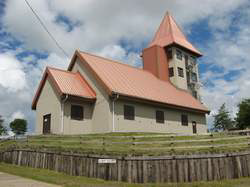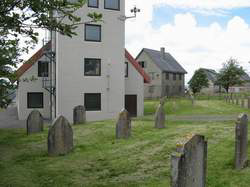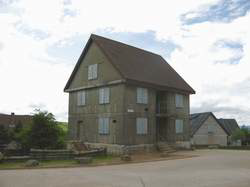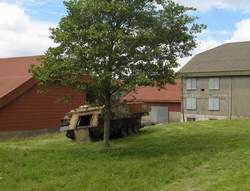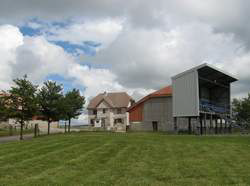Abandoned Communities ..... Mynydd Epynt
I will now give a summary of the functions served by the Sennybridge Training Area since 1940. An account of the various military training uses up to 1990 has been given in a book by Captain R G Church published to mark the fiftieth anniversary of the opening of SENTA. Apart from artillery practice there was anti-tank training, especially after the opening of Anti-Tank Range South in 1977, not far from Blaenegnant-uchaf. There was training in throwing grenades, at first by hand and later using shoulder controlled launchers, the Grenade Ranges being in the vicinity of Llawr-llamarch. There were a number of battle shooting ranges, and again a progression from targets that had to be moved and placed upright by hand to radio controlled targets. In 1983 a Nuclear, Chemical, and Biological Battle Run was opened, not, we are assured, to provide practice in the use of weapons of mass destruction, but to train troops in methods of defending themselves against them. There were assault courses and areas for training in demolition, in particular the Practical Demolition Area just south of Cwm Egnant. During warm weather trainee soldiers were prone to exhaustion and heatstroke, especially if they were wearing a Noddy protective suit and respirator.
Isolated farmhouses were of course of little use for training in urban warfare. At first a small village was constructed for this purpose, comprising a couple of farms and a few purpose built mock dwellings. In the late 1980s, however, the FIBUA was developed, a simulated German town. It lies on a hillside east of the Cilieni valley. It was built during the Cold War, when military planners believed that any close quarters fighting with Soviet forces was most likely to happen in Germany.
I have gained information about current training facilities from a fascinating meeting with Charles de Winton, a chartered surveyor based at Sennybridge Camp. As well as talking to me in his office Charles de Winton was kind enough to provide a guided tour of the training area in his Land Rover.
Charles de Winton partially justified the three hours spent touring the range by regarding it as an opportunity to conduct an informal inspection. In a wooded area he observed that the Forestry Commission have fallen behind in their obligation to maintain the road surface, and later he spotted a farmer with tractor and trailer apparently putting down hay for his sheep.
The annual usage of the facilities at SENTA is now 370,000 person training days, with training available on 350 days of the year. The facilities are used not just by trainees in the UK armed forces, but also by service personnel from elsewhere and by private firms such as security companies.
There is now much less need for artillery practice. Very occasionally, however, when long range firing is taking place the only public road across the training area, the B4519 from Brecon to Garth, is closed for short periods as there is a danger that live shells might reach it. With that exception all firing of any weapons is directed into the Impact Area, a region in the centre of SENTA that runs for roughly seven kilometres in a south-west to north-east direction. Nowadays tanks are not permitted on the range, but certain other tracked vehicles are still employed. The Royal Air Force are permitted to practice low level flying over the range, and there are opportunities for live firing by ground-attack fighter aircraft and air-dropping zones.
Isolated farmhouses were of course of little use for training in urban warfare. At first a small village was constructed for this purpose, comprising a couple of farms and a few purpose built mock dwellings. In the late 1980s, however, the FIBUA was developed, a simulated German town. It lies on a hillside east of the Cilieni valley. It was built during the Cold War, when military planners believed that any close quarters fighting with Soviet forces was most likely to happen in Germany.
I have gained information about current training facilities from a fascinating meeting with Charles de Winton, a chartered surveyor based at Sennybridge Camp. As well as talking to me in his office Charles de Winton was kind enough to provide a guided tour of the training area in his Land Rover.
The annual usage of the facilities at SENTA is now 370,000 person training days, with training available on 350 days of the year. The facilities are used not just by trainees in the UK armed forces, but also by service personnel from elsewhere and by private firms such as security companies.
There is now much less need for artillery practice. Very occasionally, however, when long range firing is taking place the only public road across the training area, the B4519 from Brecon to Garth, is closed for short periods as there is a danger that live shells might reach it. With that exception all firing of any weapons is directed into the Impact Area, a region in the centre of SENTA that runs for roughly seven kilometres in a south-
Five
Simulated church in the FIBUA village
The mock graveyard
A mock house
Two more views of the FIBUA village
